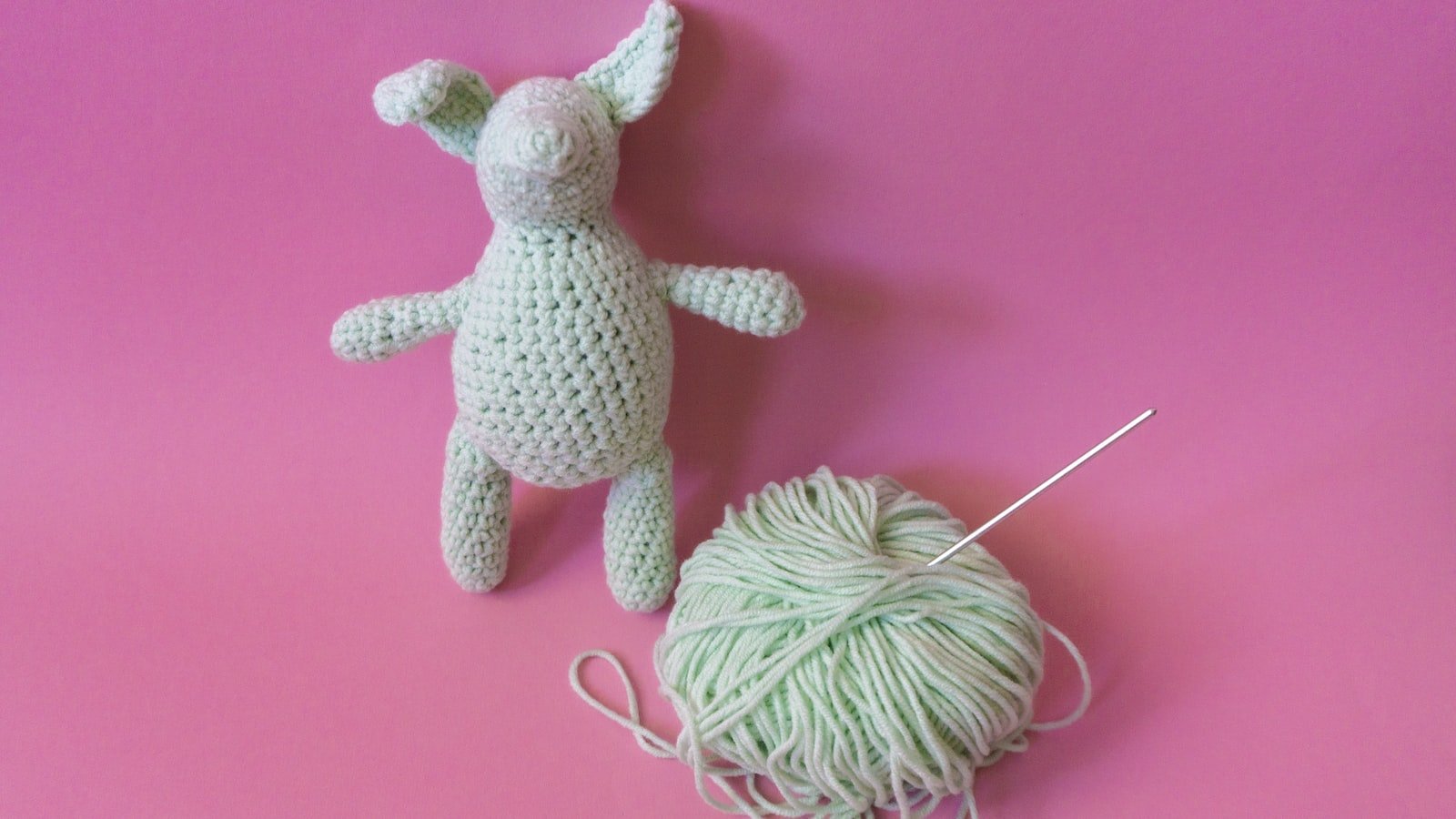Is there anything more frustrating than witnessing your furry friend incessantly scratching and nibbling at their skin? Whether it’s a case of dry skin, allergies, or simply a pesky itch, every dog owner knows the struggle of trying to stop their beloved companion from scratching. But fear not! In this comprehensive FAQ guide, we dive headfirst into the world of doggy scratching, exploring the reasons behind this itch-fest and providing you with creative and effective techniques to train your precious pooch to kick the scratching habit once and for all. So bid farewell to the constant sound of nails against skin and get ready to unleash a world of comfort for your furry best friend.
Table of Contents
- Understanding the Root Causes of Dog Scratching
- Effective Techniques for Redirecting Your Dog’s Scratching Behavior
- Creating a Consistent and Rewarding Training Routine
- Expert Tips for Addressing Underlying Medical Conditions
- Preventing Boredom and Anxiety-Related Scratching
- Q&A
- Future Outlook

Understanding the Root Causes of Dog Scratching
Dogs scratch for a variety of reasons, and it can be frustrating for both the dog and their owner. Understanding the root causes of this behavior is essential in order to find a solution that will bring relief to your furry friend.
Allergies: Just like humans, dogs can also suffer from allergies. It could be an allergy to certain foods, pollen, or even fleas. These allergies can lead to intense itching, resulting in your dog scratching excessively. Consider consulting with a vet to determine the specific allergen affecting your dog and find ways to manage it.
Pests and Parasites: Dogs are susceptible to a wide range of pests, including fleas, ticks, and mites. These tiny creatures make your dog’s skin their home and cause relentless itching. Regularly check your dog for signs of these pests and take appropriate measures to prevent and treat infestations. Remember to use proper tick and flea repellents recommended by your veterinarian.
Skin Infections: If your dog scratches to the point of breaking the skin, it may lead to bacterial or fungal infections. These infections can worsen the itching and discomfort, making your dog scratch even more. Promptly visit the vet if you notice any signs of infection, such as redness, swelling, or discharge, to get the necessary treatment.
Dry Skin: Just like humans during winter, dogs can suffer from dry skin too. Lack of humidity, frequent bathing, and harsh grooming products can strip their skin of moisture. This leads to itching and scratching. Consider using moisturizing shampoos and conditioners formulated specifically for dogs and ensure they have access to a humid environment.
Anxiety and Stress: Dogs may scratch excessively when they are anxious or stressed. This behavior can manifest due to separation anxiety, changes in their environment, or even loud noises. Identifying triggers and creating a calm and soothing environment for your dog may help alleviate their scratching.
Illness and Medical Conditions: Some medical conditions, such as hormonal imbalances or autoimmune diseases, can cause intense itching in dogs. It is important to consult with a veterinarian to rule out any underlying health issues that may be contributing to your dog’s scratching.
By understanding the root causes of your dog’s scratching, you can take steps to address them and provide relief to your furry companion. Consulting with a veterinarian should always be your first course of action to ensure proper diagnosis and treatment.

Effective Techniques for Redirecting Your Dog’s Scratching Behavior
Scratching is a common behavior among dogs that can sometimes become excessive or problematic. To help redirect your furry friend’s scratching behavior, consider implementing the following effective techniques:
- Provide appropriate scratching surfaces: Make sure your dog has access to suitable scratching surfaces, such as scratching posts or mats. These can serve as a more desirable alternative to your furniture or household items.
- Engage in interactive play: Regular play sessions with your dog can help redirect their energy and distract them from scratching behavior. Use interactive toys or engage in activities like tossing a ball or playing hide and seek.
- Introduce puzzle toys or treat dispensers: Mental stimulation is important for dogs and can deter them from scratching. Give your furry companion puzzle toys or treat dispensers to keep their mind engaged, reducing the urge to scratch excessively.
- Establish a consistent grooming routine: Regular grooming can help keep your dog’s skin and coat healthy, minimizing any irritation that may lead to scratching. Brush them regularly and ensure their nails are trimmed to an appropriate length.
Remember, redirecting your dog’s scratching behavior takes time and patience. By implementing these effective techniques, you can help your furry companion find alternative outlets for their energy and keep their scratching behavior under control.

Creating a Consistent and Rewarding Training Routine
Consistency is the key to achieving your fitness goals. By creating a well-rounded and rewarding training routine, you can stay motivated and see results. Here are some tips to help you establish a routine that works for you:
- Set realistic goals: Start by outlining your fitness goals. Whether it’s losing weight, building muscle, or improving endurance, make sure your goals are attainable and specific. This will help you stay focused and track your progress along the way.
- Plan your workouts: Dedicate time each week to plan your workouts. By scheduling exercise sessions in advance, you’re more likely to stick to your routine. Consider incorporating different types of exercises to target different muscle groups and prevent boredom.
- Mix it up: Avoid monotony by including a variety of exercises in your routine. Incorporate cardio, strength training, and flexibility exercises to keep your workouts interesting and challenge your body. This will not only prevent plateaus but also ensure a well-rounded fitness regimen.
- Track your progress: Keep a record of your workouts and track your progress along the way. Whether it’s through a fitness app, a notebook, or an online platform, monitoring your achievements can provide an extra sense of accomplishment and keep you motivated to push further.
- Reward yourself: Celebrate small victories! Treat yourself to a well-deserved reward when you achieve your milestones. It could be anything from a relaxing spa day to buying new workout gear. Rewards act as positive reinforcements and fuel your enthusiasm to stay committed to your training routine.
Remember, consistency and rewards go hand in hand when it comes to creating a successful training routine. By setting realistic goals, planning your workouts, mixing up your exercises, tracking your progress, and rewarding yourself along the way, you’ll find yourself on the path to a consistent and rewarding fitness journey.
Expert Tips for Addressing Underlying Medical Conditions
When it comes to managing underlying medical conditions, it’s crucial to have a well-rounded approach that prioritizes both physical and mental well-being. Here are some expert tips to help address these conditions:
- Educate yourself: Take the time to thoroughly understand your specific condition. Research reputable sources, consult with healthcare professionals, and ask questions. This knowledge will empower you to make informed decisions about your treatment plan.
- Follow a healthy lifestyle: Adopting healthy habits can have a significant impact on managing medical conditions. Regular exercise, a balanced diet, and sufficient sleep are all essential components. Additionally, reducing stress levels through relaxation techniques or engaging in enjoyable activities can improve overall well-being.
- Stick to your treatment plan: It’s essential to follow your healthcare provider’s instructions and take prescribed medications as directed. Skipping doses or neglecting treatment can have serious consequences. If you have concerns or experience side effects, consult your doctor for guidance.
- Build a support network: Surround yourself with a strong support system that includes understanding family members, friends, or even local support groups. They can provide emotional support, advice, and encouragement on your journey towards managing your condition.
- Monitor your progress: Keep track of any changes in your symptoms and regularly communicate with your healthcare team. This will help identify patterns or potential triggers, adjust treatment plans accordingly, and ensure that you are on the right path to wellness.
Remember, everyone’s journey is unique, and what works for one person may not work for another. Be patient with yourself and stay open to exploring different approaches. With the right mindset, support, and dedication, you can address and manage your underlying medical conditions effectively.
Please consult with a healthcare professional before making any significant changes to your treatment plan or lifestyle.
Preventing Boredom and Anxiety-Related Scratching
Soothing a cat’s itchy and irritated skin is essential to prevent boredom-induced scratching and anxiety-related behaviors. Here are a few strategies that can help alleviate these issues:
1. Environmental Enrichment:
Creating a stimulating environment for your feline friend can work wonders in preventing boredom. Provide a variety of interactive toys, scratching posts, and climbing structures to keep them engaged and mentally stimulated. Consider rotating these toys to maintain novelty and hold their interest.
2. Pheromone Therapy:
Consider using pheromone diffusers or sprays specifically designed for cats. These products emit synthetic pheromones that mimic the calming scents produced by mother cats during nursing. Their soothing effect can help reduce anxiety and ultimately discourage excessive scratching.
3. Regular Playtime and Bonding:
Allot dedicated playtime with your cat every day. Engage them in interactive games, such as feather wands or laser pointers, to expend their energy and provide mental stimulation. Additionally, spend quality time bonding through gentle petting and grooming sessions to create a sense of security and reduce anxiety levels.
By implementing these strategies, you can effectively prevent boredom and anxiety-related scratching in your feline companion. Remember, a happy and mentally stimulated cat is less likely to resort to destructive behaviors.
Q&A
Can dogs scratch excessively due to a medical condition?
Yes, excessive scratching can indicate an underlying medical issue such as allergies, fleas, or dry skin. If your dog is scratching excessively, it is important to consult with a veterinarian to rule out any medical causes.
What are some behavioral reasons that can cause a dog to scratch?
Dogs may scratch due to boredom, anxiety, or stress. Keeping your dog mentally and physically stimulated, providing them with appropriate toys and engaging activities can help alleviate these behavioral causes for scratching.
How can I train my dog to stop scratching furniture?
Teach your dog the “leave it” command and reward them when they choose not to scratch furniture. Provide them with alternative scratching options such as a scratching post or a designated area with appropriate toys to redirect their behavior.
How can I prevent my dog from scratching at doors?
To prevent door scratching, you can try teaching your dog to sit or go to a designated spot when someone is at the door. Giving them ample exercise and mental stimulation can also help reduce the urge to scratch at doors.
What can I do to stop my dog from scratching themselves excessively?
Regular grooming, including bathing and brushing, can help keep your dog’s skin healthy and reduce scratching. Using pet-friendly moisturizers or anti-itch creams can also provide relief. If the scratching persists, consult with a veterinarian to address any underlying medical causes.
Are there any products or remedies to discourage scratching behavior?
There are various products available such as bitter sprays or deterrent tapes that can be applied to furniture or doors to discourage scratching. Additionally, using positive reinforcement techniques and rewarding your dog for not scratching can also help modify their behavior.
Should I use punishment to stop my dog from scratching?
No, it is important to avoid punishment when training your dog to stop scratching. Positive reinforcement, using rewards and praise, is a more effective and humane approach to modify your dog’s behavior.
Can I train an older dog to stop scratching?
Yes, training an older dog is possible, although it may require more patience and consistency. With proper training techniques and reinforcement, older dogs can learn to break the habit and redirect their scratching behavior.
What if my dog’s scratching is causing injuries?
If your dog’s scratching is causing injuries or excessive discomfort, it is crucial to seek immediate veterinary attention. A veterinarian can assess the cause of the scratching and provide appropriate medical treatment to relieve your dog’s discomfort.
Future Outlook
As we weave through the intricate world of our four-legged companions, we stumble upon the enigmatic art of stopping a dog’s incessant scratching. Our journey through this FAQ guide has enlightened us, equipped us with the knowledge needed to conquer this persistent canine behavior. With every paw poised to scratch, we now hold the keys to unlock a harmonious and itch-free existence with our furry friends.
Remember, it is vital to approach this matter with patience, understanding, and above all, love. The sweet symphony of success will be achieved through consistency and a willingness to adapt our techniques to suit each unique pup. So, let us embark upon this captivating endeavor with open minds, eager hearts, and a twinkle in our eyes.
From unraveling the mystery behind scratching triggers to deciphering the most effective training methods, we have delved into a vast array of queries, ensuring that no stone was left unturned. Like a detective on a mission, we’ve examined the root causes of itching, explored the possibility of allergies, and even ventured into the realms of holistic remedies. Together, we unraveled the threads of scratching behavior, one tug at a time, to reveal a path towards serenity.
As we bid farewell to this enlightening adventure, let us embrace the newfound wisdom bestowed upon us. Armed with knowledge, we can navigate the winding roads of deterring scratching, leading our loyal companions into a world free from irritation and discomfort. Our dogs shall frolic with delight, liberated from the relentless itch that once plagued their every move.
Now, dear reader, it is time for you to don your training cap, grab that trusty whistle, and embark on this exciting expedition in your own canine kingdom. Armed with the power to halt the scratching frenzy, you stand as the captain of this mighty ship, shaping the destiny of your furry crew. Trust in your ability, for you possess the secrets that will transform scratch-riddled days into joyous ones filled with snuggles and bliss-filled adventures.
Remember, when your four-legged partner gazes up at you with adoring eyes and a serene, unscratched coat, you shall be reminded of the remarkable bond you forged through training. A bond that whispered tales of persistence and understanding, transcending the itchy hurdles that once stood in your way.
So go forth, brave souls, and conquer this challenge with unwavering determination. Let your canine companions bask in the glory of a life free from itching, and may you both find solace in the harmonious symphony of relief.
As an affiliate, my content may feature links to products I personally use and recommend. By taking action, like subscribing or making a purchase, you’ll be supporting my work and fueling my taco cravings at the same time. Win-win, right?
Want to read more? Check out our Affiliate Disclosure page.